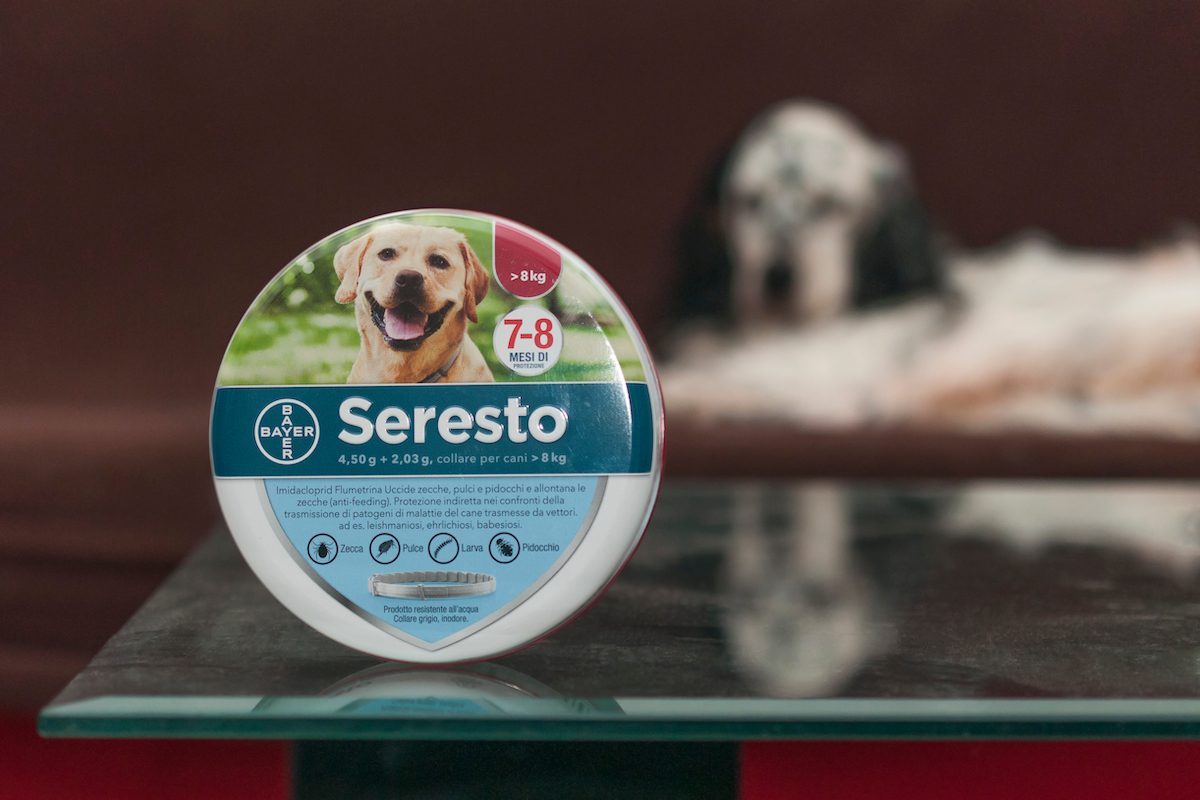USA Today spoke to a number of people who had seen their pets die in terrible circumstances. Rhonda Bomwell of Somerset, New Jersey, saw her 9-year-old Papillon service dog stop breathing with his eyes rolling back in his head a day after she fitted him with a Seresto collar. Ron Packard of Brockton, Massachusetts, saw two of his otherwise healthy Cavachons experience seizures before becoming lethargic, vomiting, and refusing food. Both died within two weeks of wearing the collars, with the vet unable to identify a problem. In less serious cases, owners have reported localized skin reactions and rashes appearing on their pets after being fitted with the collars. Keri McGrath, a spokesperson for Elanco, the company that sells the Seresto collars, told USA Today that the company “takes the safety of our products very seriously and thoroughly investigates potential concerns related to their use.” She said data shows that 1 in 568 Seresto users have an incident and “the majority of these incident reports relate to non-serious effects such as application site disorders, e.g. a reddening of the skin or hair loss below the collar.” “Keep in mind that the existence of an adverse event report does not necessarily mean the product caused the problem,” she said. “Causality between the observed signs and the use of the product is evaluated on a case-by-case basis. That said, every adverse event collected, regardless of causality, is reported to the authorities.” Best Life has reached out to Elanco for a further comment, but did not receive an immediate response. And for more pet-related news, check out This Beloved Pet Store Is Closing All U.S. Locations. The USA Today report detailed how, since the collars were introduced in 2012, the United States Environmental Protection Agency (EPA) has received reports of at least 1,698 pet deaths following use of Seresto collars. Overall, according to the investigative report, the agency has received more than 75,000 incident reports related to the collars as of June 2020. Documents from the EPA were released following a public records request from the Center for Biological Diversity, a nonprofit organization that works to protect endangered species. All the experts spoken to for the USA Today piece agreed that these numbers suggest something is amiss. “I’ve never seen any product that had 75,000 incidents,” said Karen McCormack, a retired EPA employee who worked as both a scientist and communications officer. “My God, if this doesn’t trigger a concern, that’s a fundamental problem with the process,” said Nathan Donley, a senior scientist at the Center for Biological Diversity and an expert on U.S. pesticide regulation. He also added that the numbers reported were likely “just the tip of the iceberg” due to owners often not making the connection between their pet’s illness and a seemingly harmless collar. In a statement, an EPA spokesperson told Best Life, “Under the Biden-Harris Administration EPA has returned to its core mission, which includes protecting our pets’ health. We take every incident reported seriously and review these data to see whether action is necessary. EPA encourages pet owners to read the entire label before using the pesticide product and follow all directions carefully, including monitoring your pet after application to see if side effects occur. If side effects develop, the label tells the consumer to consult the pet’s veterinarian immediately.” The Seresto collar contains two pesticides, imidacloprid and flumethrin. The first of these is a neonicotinoid insecticide, the kind of chemical used on crops in the U.S. A 2012 study by Seresto’s developer, Bayer, published in the journal Parasites & Vectors found that the two chemicals have a “unique pharmaceutical synergism,” meaning that combining them makes them more toxic to fleas. Experts are unclear why this particular combination might increase toxicity to animals, or if another ingredient in the collars is being unintentionally activated by this process, but they agree it warrants further investigation. “For whatever reason, this combination is just really nasty,” said Donley. McGrath, the Elanco spokesperson, also told USA Today that regulatory authorities have approved the collars for use in more than 80 countries. According to McGrath, the EPA is in the process of re-approving both pesticides, but there is no timeline on the final decision. And for more chemicals to be aware of, check out If You Smell This in Your Car, Your Health Could Be in Danger, Study Says. The USA Today investigation also revealed how, between 2013 and 2018, 907 incidents were reported to the EPA of humans developing adverse reactions after their pets wore the flea collars. Nineteen of these incidents were severe, including a 12-year-old boy who was hospitalized after having seizures and vomiting and a 67-year-old woman who developed heart arrhythmia. “It’s really not just happening to animals. It’s happening to people who pet them as well,” Donley said. “I have two young kids who are all over our dog all the time. I can imagine how highly exposed people would be to residues.” However, despite these stories and the EPA’s record of reported incidents, no official warning has been given to the public. In response to USA Today’s report, a spokesperson for the EPA said the following: “No pesticide is completely without harm, but EPA ensures that there are measures on the product label that reduce risk. The product label is the law, and applicators must follow label directions. Some pets, however, like some humans, are more sensitive than others and may experience adverse symptoms after treatment.” And for more risks that may be lurking in your home, check out If You’re Making Your Dinner in This, Stop Right Now, Experts Say.


